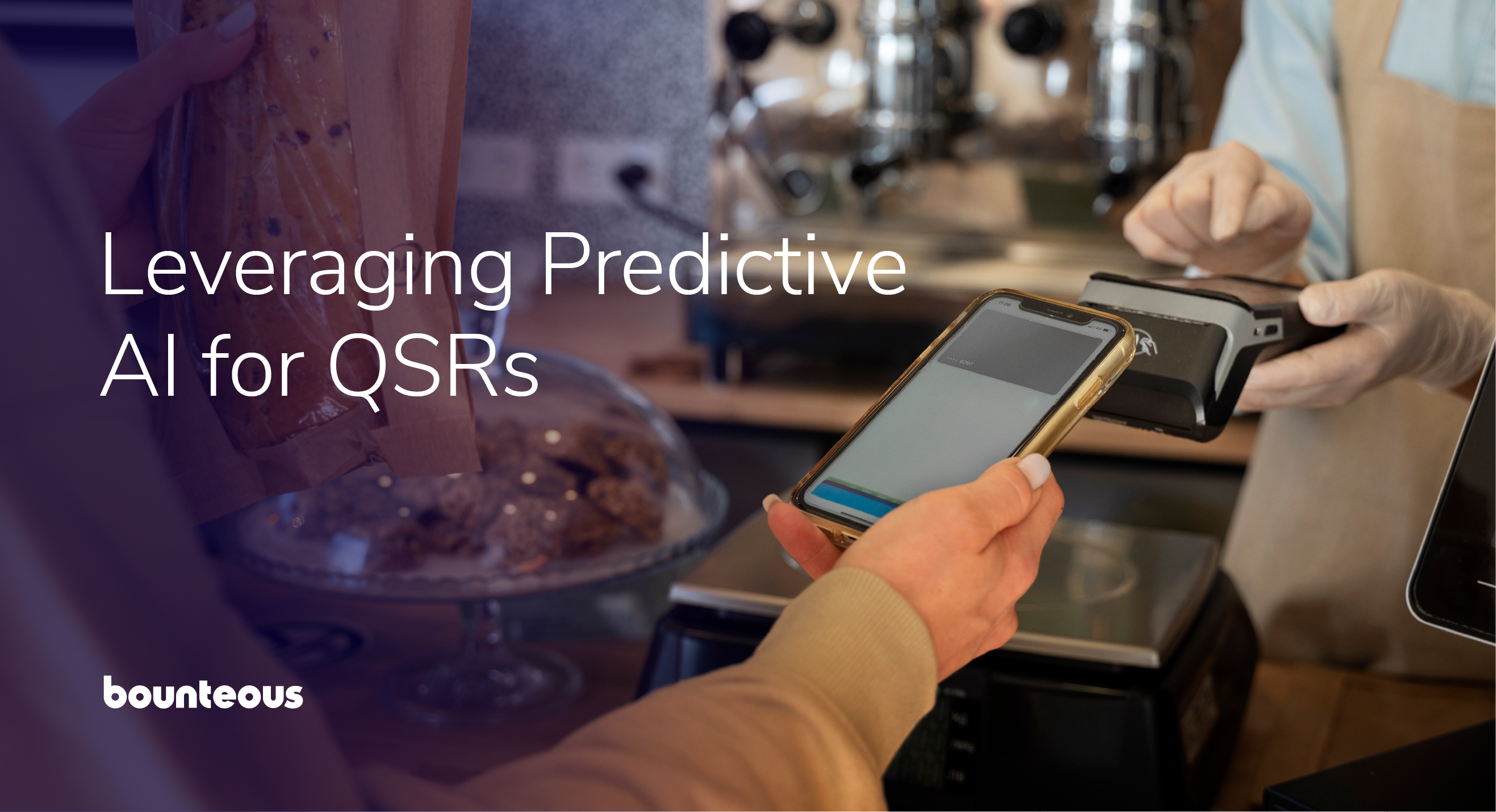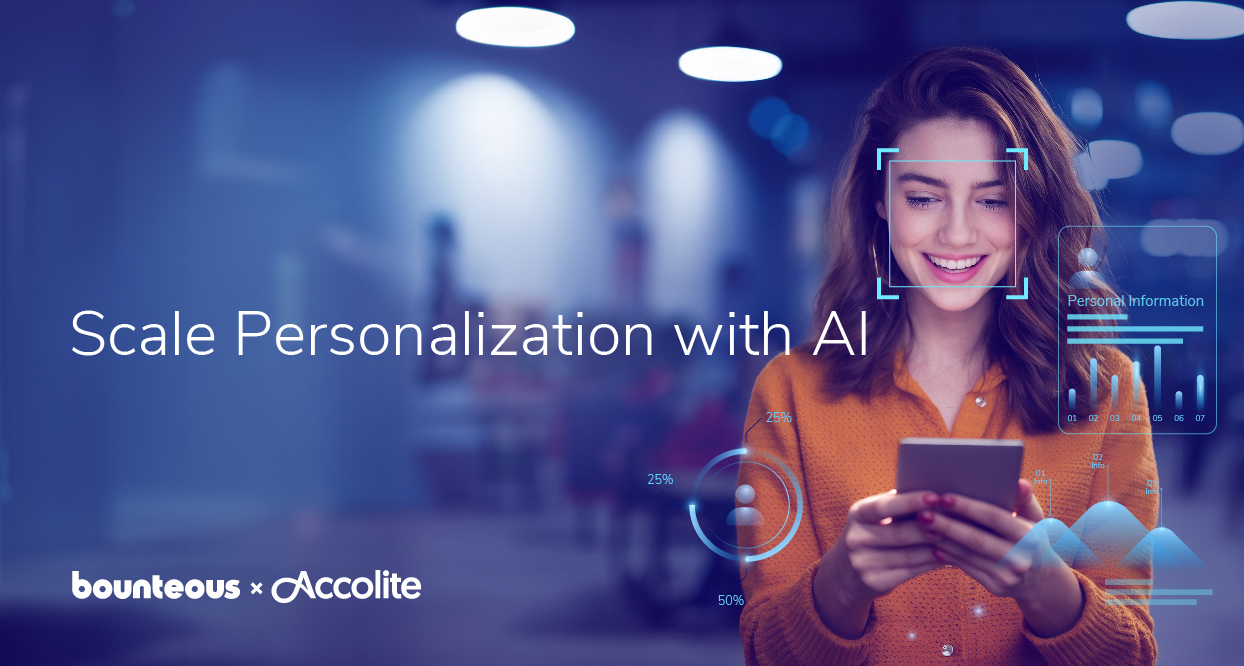Predictive AI is Creating Big Moves for QSRs

We’ve all been there. Sitting in a drive-thru or in the main area of a restaurant waiting for the line to move so we can pick up our order and move on with our life. We look at our phones, watch the line again and wonder “What’s holding everything up.” At some point, you begin to lose trust in the brand, the location, and ponder if you will come back again. It’s frustrating for the customer and can be detrimental to the brand as they may have lost a customer for life. The Quick Service Restaurant (QSR) industry thrives on speed, efficiency, and adaptability. With evolving customer demands and the intricacies of operational planning, staying ahead of the curve is paramount.
AI is the new catalyst for reshaping how QSRs predict demand and optimize their operations with AI-driven predictive analytics to revolutionize demand forecasting based on location and operational planning. In a world where time matters, and so does the margin on every piece of food cooked and served, it is time to embrace the future of digital transformations.
Investments in Digital Customer Experiences
During 2020-2021, QSRs made significant investments in digital customer experiences in response to the pandemic and the need to counteract the closure of on-premise dining. These upgrades made it possible to meet customers’ needs, and most importantly, capture vital customer data to fuel personalization. Now that AI has entered the picture, data can be used to predict customer behaviors and align it to operational efficiencies to increase overall satisfaction and improve brand image.
The Importance of Predictive Demand in QSRs
Predictive demand forecasting is more than just knowing when the lunch rush will hit. For QSRs, it’s about understanding customer behaviors, local trends, and operational needs to:
- Minimize waste: By accurately predicting demand, restaurants can reduce food spoilage and inventory costs.
- Improve customer satisfaction: Meeting customer expectations with the right inventory and staffing levels avoids long wait times, improved order accuracy, and menu item shortages.
- Optimize resources: With better forecasting, QSRs can streamline staffing and food preparation, reducing costs and enhancing efficiency.
By leveraging data effectively, restaurants can create exceptional experiences that keep customers coming back for more.
Imagine this: You visit your favorite coffee shop, eager to enjoy your signature vanilla latte, only to find they’re out of vanilla syrup—again. It’s frustrating, right? Now, picture the same scenario, but with AI in action. By analyzing data from their POS system and mobile app, the coffee shop identifies that this particular location has a consistently high demand for vanilla syrup. Using these insights, they can proactively adjust inventory levels, ensuring the syrup is always in stock. By leveraging AI customers will no longer leave frustrated, but will get exactly what they want without compromise, and a business that earns their loyalty through seamless, reliable service.
Digital Transformation: The Foundation for AI in QSRs
Digital transformation is the backbone of implementing AI in the QSR industry. Some will need to modernize their technology infrastructure to properly integrate digital tools, however, as previously mentioned many brands have already made significant investments in digital. For those QSR leaders they should strive to get more out of their current digital ecosystem to unlock the full potential of predictive analytics.
Here’s how digital transformation plays a role:
- Data Centralization: Digital transformation enables QSRs to integrate data from various sources such as POS systems, mobile apps, online ordering platforms, and third-party delivery services into a unified platform.
- Cloud Computing: Leveraging cloud infrastructure allows for real-time data processing and storage, ensuring that AI algorithms have access to the most up-to-date information.
- IoT Integration: Connected devices such as smart kitchen equipment and foot traffic sensors provide additional data points for AI models to analyze.
- Enhanced Connectivity: Modernized digital systems facilitate seamless communication between different departments, from inventory management to customer service.
- Optimized Experiences: With customer data creating robust unified profiles and operational data predicting demand and inventory, QSRs can personalize marketing messages to meet the needs of the customer and increase revenue opportunities.
QSR brands can use digital transformation to enhance operations and customer experiences through AI. By centralizing data from POS systems, mobile apps, and delivery platforms into a unified platform, the company gains a complete view of customer preferences and purchasing patterns. Leveraging cloud infrastructure allows real-time data analysis, while IoT devices like smart kitchen equipment and foot traffic sensors provide valuable insights for optimizing staffing and inventory.
With AI-powered predictive analytics, brands can personalize marketing and streamline inventory management, reducing waste and boosting revenue while enhancing the customer experience.
Leveraging Location Data for Predictive Demand
Location plays a pivotal role in customer behavior and demand patterns. AI algorithms can analyze a wealth of location-based data to provide actionable insights that can be used to drive increased Average Revenue Per Customer (ARPC) and Same Store Sales Growth (SSSG).
- Demographic Trends: AI can segment customers by age, income, or preferences within a specific area, tailoring menu offerings to local tastes.
- Traffic Patterns: Integrating data from traffic flows, public transit, and nearby events allows restaurants to predict peak times and adjust staffing and inventory accordingly.
- Weather Insights: AI models can analyze weather patterns, predicting increased demand for hot beverages on chilly mornings or ice cream during heatwaves.
- Competitive Landscape: By assessing the presence and performance of nearby competitors, AI can help identify potential gaps or opportunities to capture market share.
While combining all these factors can provide actional insights and optimize operations, here is an example based on how AI can assist with traffic patterns.
Imagine a QSR restaurant located near a busy intersection and a public transit hub. You know there is always going to be a rush of commuters looking to grab a portable breakfast and they do not have time to wait in a long line. AI analyzes traffic data for this location and determines that foot traffic peaks between 7:30 AM – 9:00 AM for the morning commute. Based on this information they can roll out a promotion like “Grab-and-Go-Breakfast" which features coffee and breakfast sandwiches that are easy to take on the train. AI also adjusts staffing levels to ensure fast service during this rush leading to an increase in same-store sales growth and happy customers.
Operational Planning with Predictive Analytics
Predictive analytics goes beyond demand forecasting to optimize operational efficiency. Here’s how:
- Dynamic Staffing: AI can forecast busy periods, ensuring the right number of employees are scheduled at the right times, reducing labor costs without compromising service quality.
- Inventory Management: Predictive models help maintain optimal stock levels, avoiding both overstocking and stockouts.
- Menu Optimization: Analyzing sales data, seasonal trends, and customer feedback enables QSRs to refine their menu, promoting high-margin and high-demand items.
- Supply Chain Optimization: AI-powered systems can anticipate inventory needs and automate supply orders, ensuring a seamless flow of ingredients and reducing delays.
Here is an example of how AI can help optimize your menu. Using predictive analytics and sales trends you find that a limited-edition spicy burger sells well during the winter. The predictive model also shows that if you pair this burger with a seasonal hot beverage, you have the opportunity to boost profit. Based on this information you decide to create a winter combo that you can showcase in personalized marketing messaging, onsite digital signage and provides your team with an upsell opportunity that benefits the customer and your bottom line,
Real-World Applications of AI in QSR Predictive Demand
Several industry leaders have already embraced AI to enhance their operations:
- McDonald’s: Using AI-driven decision technology, McDonald’s tailors drive-thru menus in real-time based on weather, traffic, and customer preferences.
- Starbucks: The coffee giant utilizes predictive analytics to optimize store layouts, personalize marketing, and forecast demand for specific items.
- Domino’s: By integrating AI with GPS and location data, Domino’s predicts delivery times and demand spikes, improving both customer experience and operational efficiency.
Getting Started with AI for QSRs
Implementing AI in a QSR setting doesn’t have to be overwhelming. Here are steps to get started:
- Define Objectives: Identify specific goals, such as reducing food waste or improving peak-hour efficiency.
- Collect and Integrate Data: Gather relevant data from POS systems, foot traffic counters, weather reports, and more.
- Invest in Digital Infrastructure: Ensure that your QSR is equipped with modern digital tools such as cloud computing, IoT devices, and robust analytics platforms to support AI implementation.
- Choose the Right Tools: Leverage AI platforms tailored for the QSR industry, ensuring ease of integration with existing systems.
- Test and Iterate: Start with a pilot program to measure effectiveness, then scale gradually while refining the models.
By following these steps, QSRs can seamlessly embrace AI technologies, driving innovation, efficiency, and gain the competitive edge in the food service industry.
The QSR Restaurant of the Future is Here
In the highly competitive QSR landscape, success requires more than intuition—it demands data-driven precision enabled by digital transformation. AI-powered predictive analytics offer a powerful way to anticipate customer needs, optimize operations, and drive growth. Leveraging AI for location-based demand forecasting and operational planning, QSRs can enhance customer service while achieving new levels of efficiency.
2025 will be a defining year for QSRs. Successful QSRs will share key traits: meeting customer expectations with consistency, convenience, and brand alignment. Behind the seamless customer experience, these brands will be relentlessly investing in intelligent digital frameworks, embracing adaptability, and harnessing the potential of AI.
Learn more about digital transformation with Bounteous to build solutions for today’s challenges and tomorrow’s opportunities.


